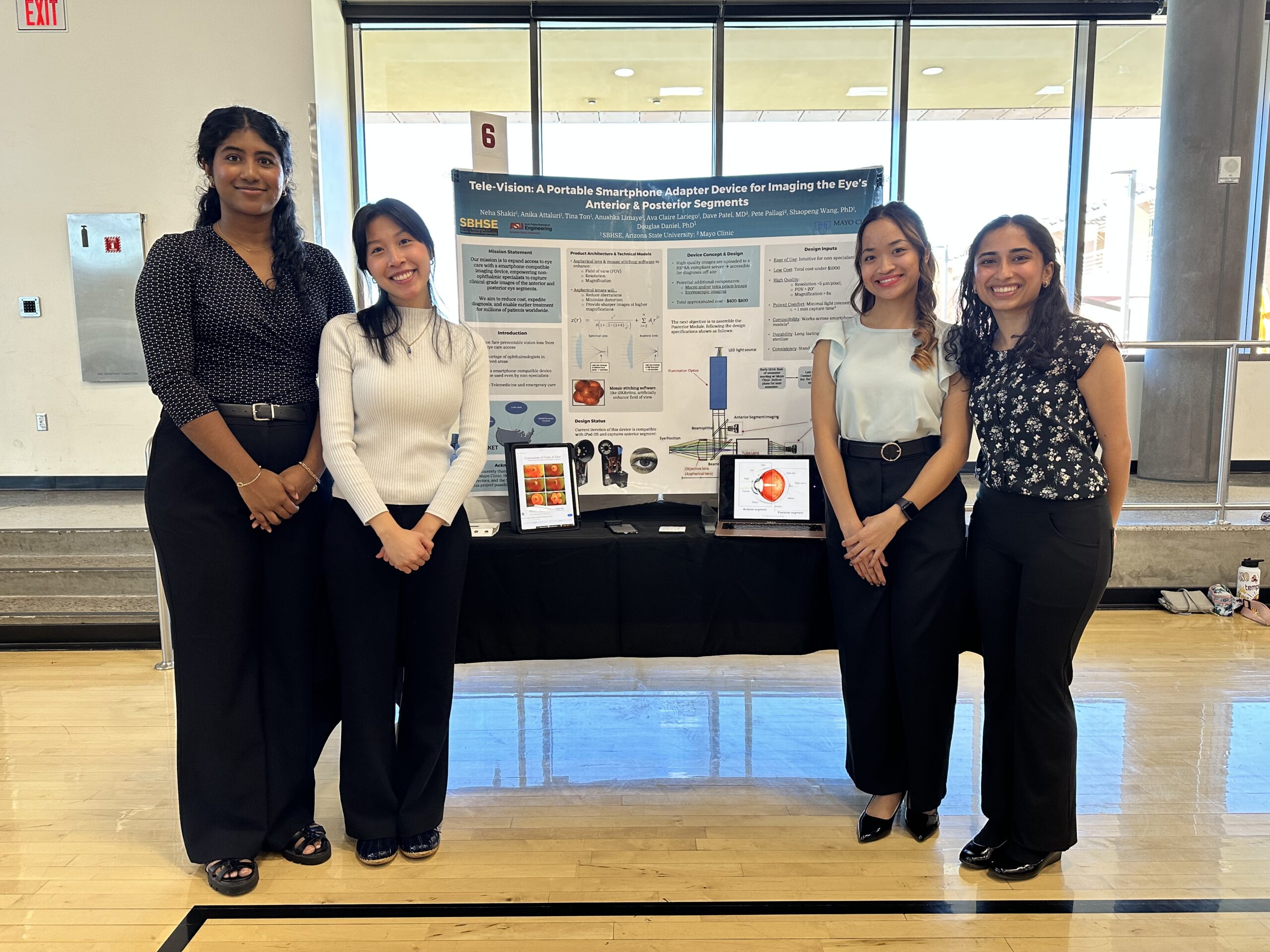
Modular Optical System that Acts as an Adapter for Smart Devices
Biomedical Engineering
Anika Attaluri, Ava Claire Lariego, Anushka Limaye, Neha Shakir, and Tina Ton
Abstract
Description of Concept: This project aims to develop a smartphone attachment device capable of capturing high-quality ophthalmic images for analysis of the posterior and anterior eye segments.
Clinical Need/Market: A 2023 WHO report finds that despite nearly 2.2 billion people worldwide having vision impairment—half of which cases were preventable—a large percentage of patients lack access to appropriate ophthalmic care, especially in rural and/or underserved populations1. Additionally, given the global shortage of skilled ophthalmologists, there is a need for an ophthalmic imaging device that can be used even by non-specialists as an attachment to mobile smartphone cameras, thus eliminating the cost and skill-associated barriers currently impeding access to quality eye care. Such a device will be of particular use in Telemedicine applications to perform remote eye exams that meet clinical standards, thus reducing patient wait times, improving earlier treatment, and expediting emergent diagnosis.
Design Specifications: The device aims to obtain high-resolution images—i.e., within 5 microns/pixel—thus being able to capture fine details of the retina and optic nerve. To ensure accessibility and usability in diverse settings, the attachment will be designed to be compact and compatible with a wide array of smartphone designs and operating systems, with built-in adaptability for varying phone sizes, shapes, and camera placements. Additionally, if an adequate field of view is unable to be captured within a single image sans mydriatics, we will consider leveraging mosaic stitching soware to surpass this limitation and artificially expand the field of view.
Design for Manufacturing & Associated Costs: Ansys Zemax (free student version) will be used as our optical design soware for modeling, and we will utilize the ASU 3D print lab for the outer body components. For all optical elements in our design (i.e., aspherical lens, tube lens, polarizers, beamsplitters, etc.), we will order from Thorlabs and/or Edmund Optics, bringing our total design-associated costs to ~$400-$800.
Video
Research poster
Health
Partner
Mayo Clinic Synapse Clinical Immersion Program